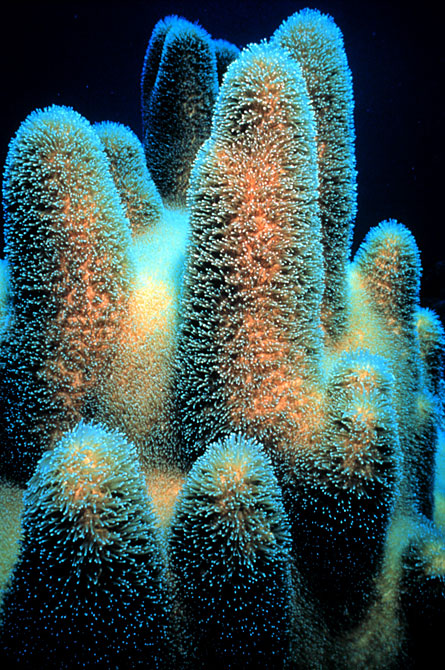ENV Tidbits: Corals, nano concerns, and more
Today I’m going to launch the first in a series of occasional packages of tidbits. Individual elements won’t be whole stories in the way Science News conventionally prepares them. Instead, these will be a compilation of news nuggets on things that cross my desk or threaten to clutter my virtual inbox. They’ll resemble some of the notes we used to write for the magazine lo many years ago (like in the 1980s).The idea is to share a few developments that you might have missed — and offer links where you can dig deeper. And I’ll tag entries with a few letters up front to suggest the research area they fall into. Like today’s — ENV to signal these are on the environment.
And let us know what you think of our offering such tiny morsels.

1) Globally, 45 percent of CORALS are healthy. That’s the good news. Less heartening: One in five corals are dead — and climate change appears to be a major contributor to the declining health of those that remain (through ocean acidification, seasonal warming, and increasing storm frequency, for instance). That in a nutshell is the conclusion of a report issued today by the Global Coral Reef Monitoring Network. The International Union for Conservation of Nature, a member of that network, unveiled the report along with a second one focusing on Indian Ocean corals. Listen to a three-and-a-half-minute interview with the head of IUCN’s global marine program, who gives you a brief rundown on both reports, at: http://cmsdata.iucn.org/downloads/1009_cgl.mp3.
2) This morning the National Research Council issued a 77-page opus that criticized federal policy on NANOTECHNOLOGY SAFETY. It argues that Uncle Sam should have a formal policy — what it calls a “risk research strategy” — to try and gauge potential risks posed by nanotechnologies (such as the immunity-perturbations seen in test-tube studies with nanosilver that I wrote about last week). First what the report doesn’t do: offer assessments about how safe — or dangerous — current nanotechnologies are. Instead, it focuses on whether the feds are making sure that investigations will be carried out to see if these technologies are safe before they’re released in the marketplace. Unfortunately, the report’s authors say, the National Nanotechnology Initiative “does not present a vision, contain a clear set of goals, have a plan of action for how the goals are to be achieved, or describe mechanisms to review and evaluate funded research and assess . . . the potential environmental, health and safety risks posed by nanotechnology.” Ouch! Read it for yourself at http://www.nap.edu.
3) Rep. Bart Gordon, who chairs the House Science & Tech Committee weighed in on the report, saying “I share many of these concerns, and in order to begin to address them, [his committee] developed LEGISLATION. This bill, called H.R. 5940, passed the house by a wide margin, he notes — but not the Senate. Gordon vows to next year reintroduce this bill, which will again attempt to require development of the environmental, health and safety research the new NRC report just called for. The bill would also include timelines and milestones for achieving these goals, he said, and set specific responsibilities to achieve those goals for each federal participating agency in the NANOTECH INITIATIVE.
4) PESTICIDES don’t belong in SOFT DRINKS. But around the world, they can be found in many of these refreshing beverages that were made from fruit juices. That’s according to a new report out of Spain by researchers at the University of Jaén. The scientists devised what they claim is the first technique for measuring organic pesticides in these drinks, and then ran samples of some 100 drinks (purchased from 15 nations around the world). U.S. drinks had very low concentrations, they report in the Dec. 1 Analytical Chemistry. Indeed 11 of the 17 samples with no detectable pesticides had been purchased in Florida. Then again, these drinks contained no real fruit juice, just artificial fruit flavorings. Beverages from plenty of other regions — including Spain and England — contained substantial concentrations of pesticides, usually post-harvest fungicides or insecticides. Fifty-eight percent of the sampled drinks that contained at least four. Yum! Pollution in the raw juices that flavored these drinks tends to be “really high,” Juan R. Garcia-Reyes and his colleagues say: i.e. 300 to 800 micrograms per liter. This suggests fruit peels were either included in juice preparation or not appropriately washed prior to squeezing juices out of the fruit. This constitutes bad manufacturing practices, the chemists says — albeit ones that could be easily corrected. And they should be, the researchers argue, “in order to avoid this source of pesticide exposure, particularly [in] vulnerable groups with higher exposure, such as children.”






